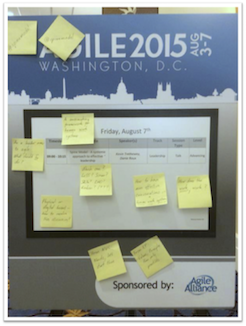Agile2015 Talk - Spine Model, A systemic approach to effective leadership
Hear the talk live in South Africa
Following the success of the international presentation, we are offering South African organisations and user groups the opportunity of hearing it (we’re happy to travel further if you are paying :) ).
Please contact us to reserve a slot, or contact your local usergroup and ask them to invite us!

Feedback from Agile 2015 Conference
Kevin Trethewey and Danie Roux recently traveled to Washington DC, USA to present this talk.
It was extremely well received, getting an overall rating score of 4.7 out of 5 (conference avg was 4.1).
Further comments were…
"This session truly had outstanding energy and content."
"The most useful talk to me of the conference. I will experiment with the lessons learned in my systems."
"This session exceeded my expectations. These guys are masters of their craft. I could observe them living what they were teaching in the discussion portion. Lots to follow up on."
Watch a recording of the Agile 2015 version
The talk was not formally recorded, so we did set up our own camera to capture the session…
Talk Abstract
Great people, great ideas, great work environment. Often all the ingredients are there, but somehow there always seems to be fires to put out, misunderstanding to smooth over, damage to be undone.
Being an effective leader is hard when there is just so much to be done all the time.
As a leader in an organisation you are only effective when there is a shared perception of the way things currently are and productive debate on the way they should be. An effective leader makes it clear where the boundaries are and empowers people to make choices within them. Without an effective mental model of your work system that is easily shared with others this becomes an intractable problem that consumes your energy as well as that of all those who look to you for direction.
The Spine Model is a systemic approach to mapping a work system that will enable you to be a more effective leader. It provides an explicit way to determine your responsibilities as a leader and those that should be delegated to the people doing the work. It shows how and where to place enabling constraints into a work system that will allow the people most familiar with the current local context to decide how that work should be done.
The Spine Model has emerged from our coaching through necessity rather than intent. We have been applying and refining it for some time and, recently, teaching it to others. We have found that it meets a large need, particularly for people that have started to move beyond basics of Scrum and Agile practices.
Learning Outcomes
- Create and maintain a shared perception of how things are, and why.
- Lift conversations to an effective level, breaking agreement deadlocks.
- As a leader, place enabling constraints into the system and know when to intervene effectively.